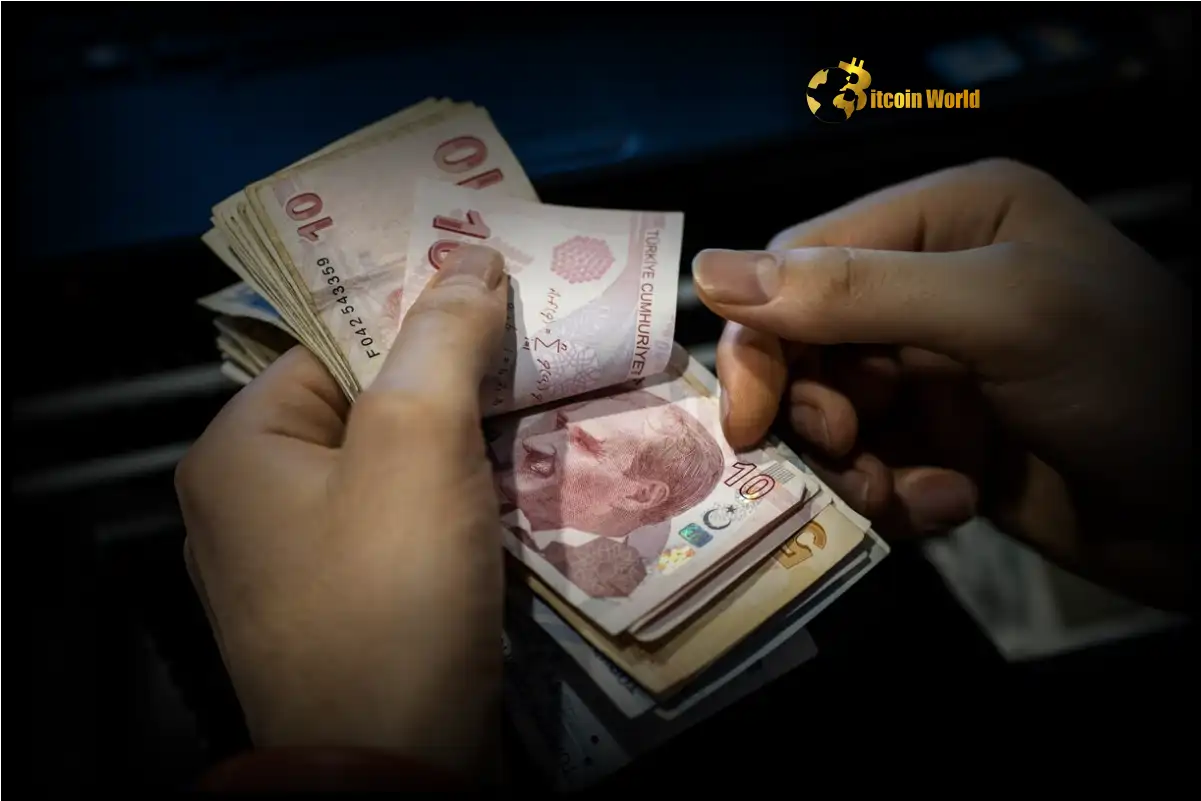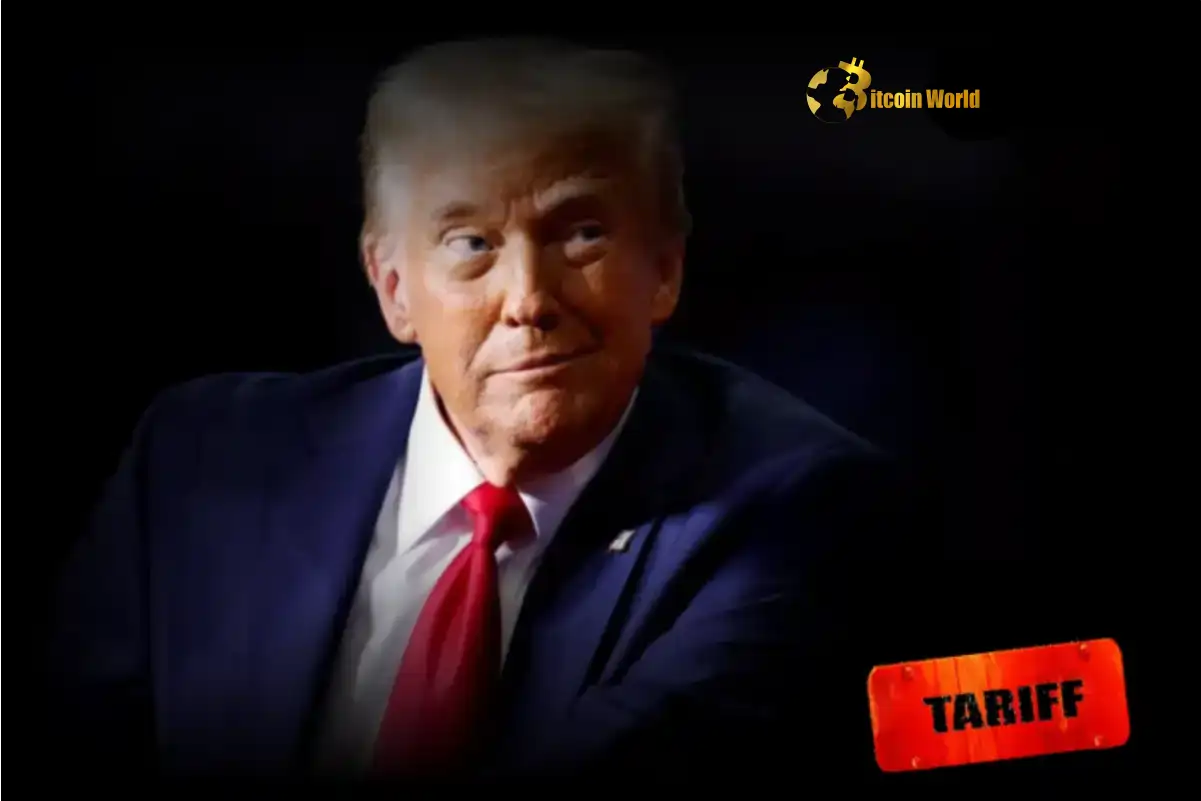Cryptocurrency investors are no strangers to volatility, but understanding currency fluctuations in traditional markets can offer valuable insights into broader economic trends. Bank of America (BofA) has recently highlighted a crucial development: the Turkish Lira’s volatility sensitivity has seen a lasting impact, signaling potential ripples across emerging markets and beyond. What does this mean for the global financial landscape, and how might it intersect with the world of digital assets?
Decoding Turkish Lira Volatility Sensitivity: What’s Happening?
BofA’s analysis points to a significant shift in how the Turkish Lira reacts to global economic events. Volatility sensitivity, in this context, refers to the degree to which the Lira’s value fluctuates in response to market news, geopolitical developments, and shifts in investor sentiment. The key takeaway is that the Lira’s reactions have become more pronounced and persistent, indicating a potentially deeper structural change in its market behavior. This isn’t just a fleeting blip; BofA suggests a lasting impact.
Here’s a breakdown of what contributes to this heightened sensitivity:
- Economic Policy Uncertainty: Turkey’s economic policies have faced scrutiny, leading to investor nervousness and a quicker trigger for Lira fluctuations.
- Geopolitical Risks: Regional instability and Turkey’s geopolitical positioning amplify market reactions to global events.
- Reduced Investor Confidence: Concerns about inflation and central bank independence have eroded investor confidence, making the Lira more vulnerable to sell-offs.
- Global Market Sentiment: As a part of emerging markets, the Turkish Lira is susceptible to shifts in global risk appetite. When investors become risk-averse, currencies like the Lira often bear the brunt.
To visualize this, consider a simplified scenario:
| Event | Previous Lira Reaction | Current Lira Reaction (Heightened Sensitivity) |
|---|---|---|
| US Federal Reserve Rate Hike Announcement | Moderate Lira depreciation | Significant and rapid Lira depreciation |
| Geopolitical Tension Spike | Noticeable Lira weakening | Sharp and prolonged Lira weakening |
| Positive Global Growth Data | Slight Lira appreciation | Limited Lira appreciation, quickly offset by other factors |
Why Should Crypto Investors Care About Emerging Markets Currency Instability?
You might be wondering, what does the Turkish Lira’s volatility sensitivity have to do with cryptocurrencies? The answer is multifaceted and deeply relevant:
- Early Warning System: Currency instability in emerging markets can act as a barometer for broader global economic stress. If traditional currencies in certain regions are experiencing heightened volatility, it can signal potential shifts in global capital flows and risk sentiment that could eventually impact even the crypto market.
- Safe Haven Narrative: In times of fiat currency turmoil, cryptocurrencies, particularly Bitcoin, are sometimes viewed as alternative stores of value or “safe havens.” Increased currency risk in traditional markets could strengthen this narrative and drive interest in digital assets.
- Capital Controls and Crypto Adoption: In countries facing severe currency depreciation, governments might implement capital controls to stem outflows. Historically, such measures have, in some cases, inadvertently fueled cryptocurrency adoption as individuals seek ways to bypass restrictions and preserve their wealth.
- Macroeconomic Interplay: The crypto market, while often seen as separate, is increasingly influenced by macroeconomic factors. Emerging markets currency crises can contribute to global economic uncertainty, which can, in turn, affect investor behavior across all asset classes, including cryptocurrencies.
BofA Analysis: Unpacking the Implications of Lira Sensitivity
BofA’s analysis isn’t just about diagnosing the problem; it’s about understanding the potential consequences. The lasting impact on lira sensitivity suggests that this isn’t a temporary issue that will simply resolve itself. Here are some key implications BofA likely considered:
- Increased Cost of Borrowing: Heightened volatility makes it riskier for Turkey to borrow in international markets, potentially increasing borrowing costs and further straining the economy.
- Inflationary Pressures: A weaker and more volatile Lira can exacerbate inflation as import prices rise, creating a vicious cycle.
- Impact on Turkish Businesses: Businesses operating in Turkey face increased uncertainty, making investment and long-term planning more challenging.
- Potential for Contagion: While not always the case, currency crises in one emerging market can sometimes trigger concerns about others, leading to broader market instability.
Navigating the Waters of Volatility: Actionable Insights
While predicting currency movements with certainty is impossible, understanding the dynamics of Turkish Lira volatility and its sensitivity provides valuable context. Here are some actionable insights for those watching the crypto and broader financial markets:
- Stay Informed on Macro Trends: Keep an eye on global macroeconomic developments, including inflation, interest rate policies, and geopolitical events. These factors increasingly influence both traditional and crypto markets.
- Monitor Emerging Markets: Pay attention to currency movements and economic indicators in emerging markets like Turkey. They can offer early signals of potential shifts in global risk appetite.
- Diversification Remains Key: In volatile times, diversification across asset classes, including a mix of traditional and digital assets, can be a prudent strategy.
- Understand Risk Tolerance: Be realistic about your risk tolerance and adjust your investment strategies accordingly. Volatility can present opportunities, but also significant risks.
The Lasting Echo of Lira Volatility: A Summary
Bank of America’s note on the lasting impact of Turkish Lira volatility sensitivity serves as a stark reminder of the interconnectedness of the global financial system. While focused on the Lira, the underlying themes of economic policy uncertainty, geopolitical risks, and investor confidence are relevant across numerous markets, including the cryptocurrency space. By understanding these dynamics, crypto investors can better navigate the inherent volatility of digital assets and make more informed decisions in an increasingly complex world. The urgent situation with the Turkish Lira highlights the importance of staying vigilant and adaptable in the face of global economic shifts.
To learn more about the latest Forex market trends, explore our article on key developments shaping currency risk and institutional adoption.
[ad_2]
Source link





